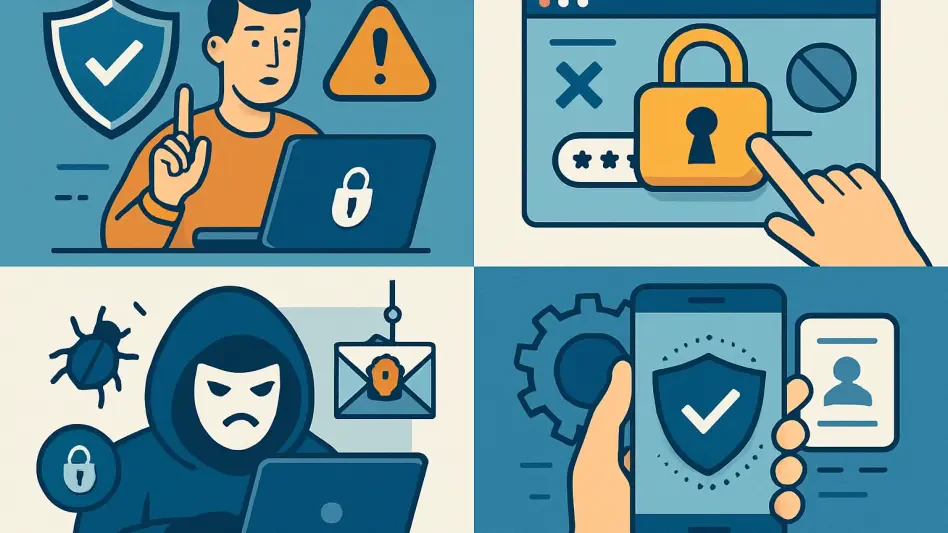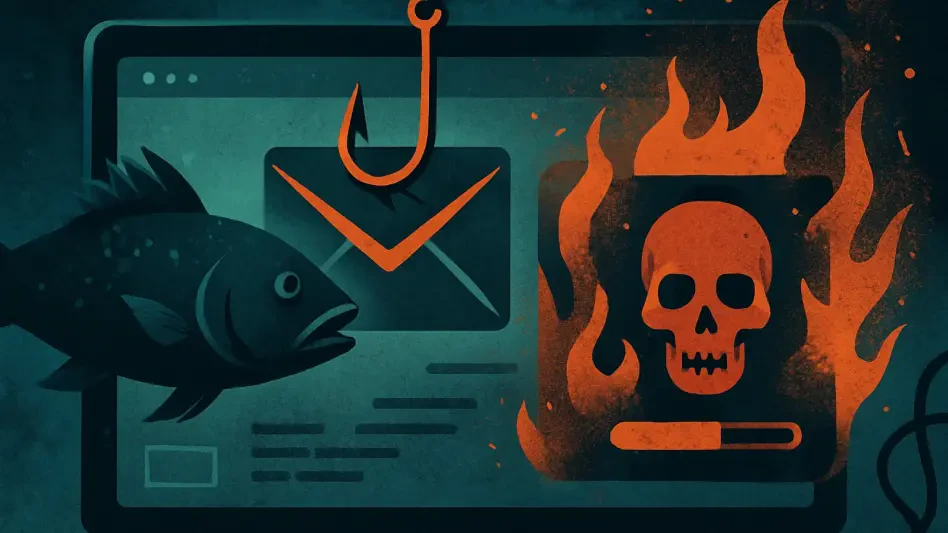The rapid digital transformation of the global landscape has undeniably exacerbated the cybersecurity challenges faced by organizations today. Mimecast’s State of Human Risk Report and KnowBe4’s survey from early 2025 reveal that human error now overwhelmingly accounts for a staggering majority of data breaches. Technological advancements alone are no longer sufficient to safeguard against cyber threats, as the role of employee behavior and awareness has proven to be a crucial element in the defense against such breaches.
The Predominance of Human Error
In today’s cybersecurity battle, human error takes center stage over technological flaws. According to Mimecast, approximately 95% of data breaches are attributed to human mistakes, underscoring the need for organizations to pivot their focus from purely technological defenses to comprehensively addressing internal vulnerabilities. As the digital world continues to interconnect, the actions of employees—whether unintentional or stemming from a lack of awareness—can have far-reaching implications on an organization’s security posture.
The findings from Mimecast’s study, compiled from interviews with 1,100 security and IT decision-makers, highlight how unintentional actions by employees can dramatically heighten internal threats. With 43% of cybersecurity leaders observing a rise in data leaks due to employee mishaps, the fiscal repercussions are nearly insurmountable, averaging $13.9 million per incident. Given such high stakes, the importance of addressing human error cannot be understated.
Employee Overconfidence and Its Dangers
The dissonance between employee confidence and actual competence in identifying phishing emails remains a significant challenge. KnowBe4’s survey reveals that although 86% of employees believe in their ability to spot phishing attempts, nearly half have succumbed to these scams, revealing a critical vulnerability within the workforce. This overconfidence, which misleadingly instills a false sense of security, opens the door for cybercriminals to exploit and breach organizational defenses.
This overconfidence is not exclusive to any one region. Specifically, in South Africa, 91% of employees exude confidence in their phishing detection capabilities, yet they also experience the highest phishing victimization rate at 68%. This perilous overvaluation of skill presents a prime opportunity for cybercriminals, exploiting the very blind spots employees are unaware of. The gap between perceived and actual competence necessitates rigorous and ongoing educational efforts to bridge this divide, empowering employees with the knowledge and tools to better safeguard sensitive data.
Internal Risks and Collaboration Tools
Both Mimecast and KnowBe4 acknowledge that internal threats are often not just from disgruntled employees but those who are simply fatigued or careless. The advent and increased usage of collaboration tools like Microsoft Teams and Slack have introduced new attack surfaces, leading to more sophisticated attempts to breach these platforms. These tools, designed to streamline communication and boost productivity, might inadvertently expose organizations to cyber threats if not properly secured.
The growing reliance on these tools necessitates a reconsideration of their security infrastructures. With 44% of respondents noting increased attacks via collaboration tools and 67% asserting inadequacies in the native security of these platforms, organizations must adopt advanced measures to shield these points of connection from malicious activities. The need to secure collaboration tools highlights the importance of proactive security measures, focusing not only on the platforms themselves but also on educating users about safe practices.
Budgeting and Tailored Security Programs
Despite the majority of respondents noting increased budgets for security, merely 3% believe their current funding suffices to tackle all cybersecurity challenges. This alarming statistic underscores a critical gap in resource allocation within organizations, prompting many to reassess their budgeting strategies. More than half express the need for additional budget allocations specifically towards cybersecurity staff and third-party services to enhance the security of collaboration tools.
Mimecast advocates for specialized human risk management programs tailored to address high-risk employees and specific vulnerabilities, moving beyond general awareness training. With a mere 8% of employees responsible for 80% of incidents, focused initiatives might significantly curb the frequency of data breaches. This targeted approach highlights the potential for greater efficiency in resource deployment, ensuring that high-risk individuals receive the attention and training necessary to minimize their impact on overall security.
The Role of AI in Cybersecurity
As organizations grapple with the challenge of phishing and social engineering attacks, the use of artificial intelligence in these attacks adds another layer of complexity. Generative AI has made phishing attacks more sophisticated, complicating the detection process for IT teams and security leaders. The rapid evolution of AI-based threats demands a parallel advancement in defensive strategies, leveraging the capabilities of AI to detect and counteract these sophisticated attacks.
While 12% have already fallen victim to deepfake scams, a significant portion of decision-makers admits to being unprepared for AI-driven threats. Nevertheless, the potential for AI to bolster defensive capabilities remains immense. As per Mimecast, 95% of respondents already employ AI to defend against cyber-attacks, emphasizing the dual-edge role AI plays in both perpetrating and mitigating threats. Integrating AI tools within cybersecurity frameworks could offer organizations a predictive edge, enabling them to identify and neutralize threats before they escalate.
Reinforcing Reporting Mechanisms
One notable theme from KnowBe4’s survey is the underreporting of security risks. Despite the majority feeling comfortable in reporting risks, 11% hesitate due to a lack of knowledge on how to report, perceived difficulty or indifference. This underreporting represents a critical gap in the early detection of threats, potentially allowing nascent issues to develop into severe breaches.
Simplifying risk reporting and making it more accessible for employees is crucial. Organizations must foster a culture where reporting perceived threats is encouraged and seamlessly integrated into daily workflows to preempt potential breaches before they escalate. Ensuring that risk reporting mechanisms are user-friendly and well-communicated can dramatically improve an organization’s overall security posture.
Proactive Defense Strategies Against AI-Driven Threats
The rapid digital transformation of the global landscape has undeniably intensified the cybersecurity challenges that organizations face today. According to Mimecast’s State of Human Risk Report and a survey by KnowBe4 from early 2025, human error now accounts for an overwhelming majority of data breaches. This significant finding underscores that advancements in technology alone are no longer enough to protect against cyber threats. It’s become clear that employee behavior and awareness play a critical role in defending against such breaches. As companies adopt more advanced technologies, they must also invest in comprehensive training and awareness programs to minimize human error. By fostering a culture of cybersecurity awareness and responsibility among employees, organizations can enhance their overall security posture. This dual approach—combining cutting-edge technology with well-informed employees—offers the best chance at mitigating the risks associated with cyber threats.







